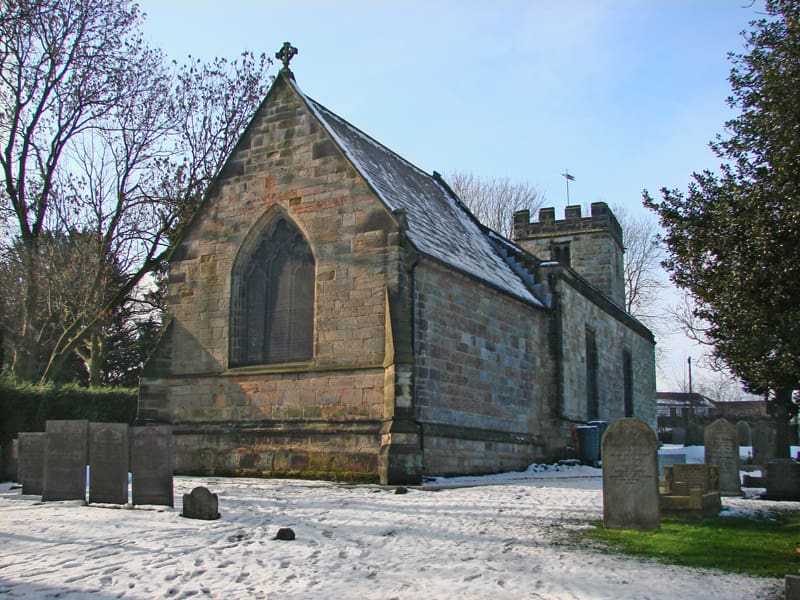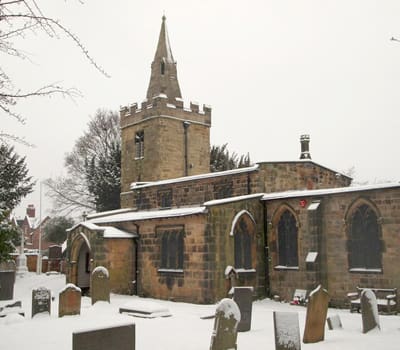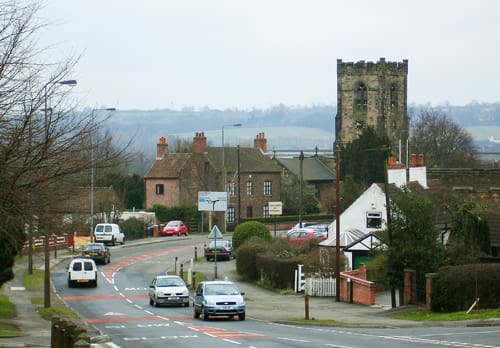Introduction
The remains of the Abbey can be found in the village of Dale Abbey and can be reached by a short walk from the village centre. The ruins stand on private property and so access is limited. On approaching the village, the remains of the great east window are an obvious landmark and sadly virtually all that remains of this once great building.
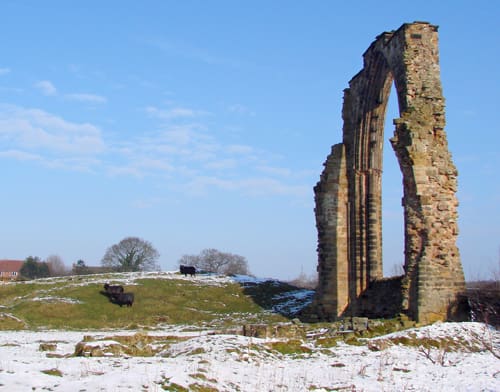
(Grant Shaw)
The Legend of the Derby Baker
The Dale has been a place of worship for centuries, however the origins of the Abbey at Dale are steeped in myth and legend. Many centuries ago, there lived in the parish of St Mary’s in the City of Derby, a devout and God fearing baker. His love for his fellow men led to him being compared to the Biblical Roman Centurion, Cornelius. His love of God and his desire to please him led him to give away any items of food or clothing surplus to his and his family’s requirements to the poor and needy of Derby.
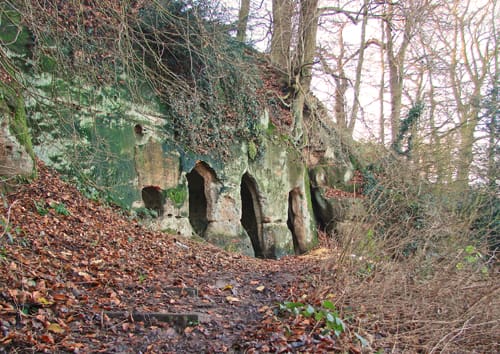
During one midday sleep, The Blessed Virgin Mary appeared to the baker in his dreams and told him that his work and devotion had pleased God and that he was to go to a place called ‘Depedale’ and there serve God in hunger, thirst, coldness and nakedness.
Even though he had no knowledge of this place, the baker immediately abandoned all he possessed and made his way out of Derby. On reaching the village of Stanley, he overheard a mother telling her daughter to take their cattle to Depedale. On hearing this, he asked as to the whereabouts of the place and was told to accompany the young girl until she arrived at her destination. What he found when he arrived in the Depedale, was a desolate and marshy valley.
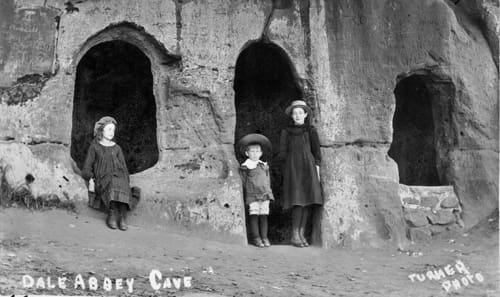
Despite these deprivations, he carved out for himself a dwelling from the soft sandstone cliffs on the valley slopes. In this humble home he lived and worshipped: until one day, while out hunting with his dogs and friends, Ralph Fitz Geremund, the Lord of the Manor of Ockbrook and Alvaston and whose lands included Depedale, came across Cornelius. On seeing this poor man clothed in rags and skins and on hearing his story, Ralph took pity on him and permitted him to remain in the Dale and granted him the tithe of the mill at Borrowash.
The Legend of the Outlaw
Another story attached to the founding of the Abbey tells of a notorious outlaw named Uthlagus and his band who, intent on plundering the pockets of travellers moving between Nottingham and Derby, arrived in the Dale and rested. While he and his companions were asleep, a vision came to him in which he saw a golden cross reaching high into the sky and whose arms spread as far as the eye could see. He saw men from all the nations of the earth come to worship there. On waking, the outlaw told his companions of what he had seen and from that day forwards he would no longer pursue his illegal trade but devote himself to more befitting work.
Uthlagus is the latin form of the Anglo-saxon word utlaugh, which today is spelt outlaw.
The Establishment of the Abbey: Failure and Success
Although no absolutely accurate dates can be attached to the various events which took place during the early years of Dale Abbey, it is believed the baker arrived in Depedale in or around the year 1130. Between 1145 and the end of the 12th century there were three attempts to establish an abbey in the Dale.
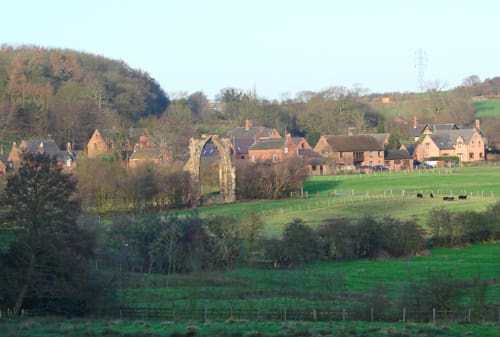
In 1145 a party of Augustinian monks arrived from Calke Priory. They were followed some twenty years later by Premonstratensian canons from Tupholme and finally, a few years later by another group from Welbeck. All these attempts failed, primarily due to the isolation of the area and the lack of good arable land amidst the thick woodlands. Finally, from around the year 1199, the Abbey became well established enough — and with the acquisition of further lands, tithes and other properties — to survive for the next three hundred and forty years.
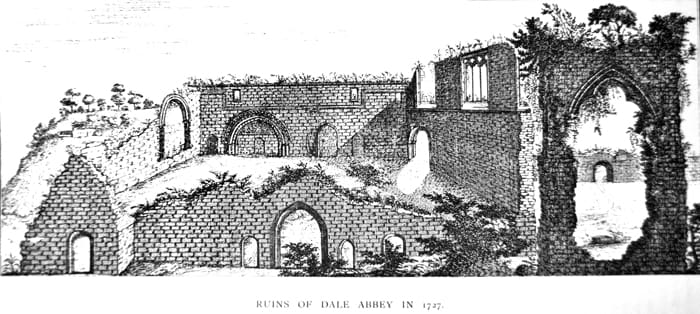
The bestowal of the town of Stanley on the Premonstratensian order by Geofrey de Salicosa and his wife Matilda ensured a more secure and permanent foundation for William de Grendon. A new abbey, known as the Church of St Mary of Stanley Park was begun in 1204. The main part of the church, chapter house, common room and claustral buildings were completed soon after with various extensions, the most extensive improvements and additions particularly to the church and cloisters being made under Abbott Lawrence in the later 13th century.
The general plan of the Abbey as far as is known is of a square cloister attached to the south of the main church building with a guest hall on its west side, refectory to the south and chapter house and sacristy to the east.
All that remains today are the arch of the east window which originally contained geometric tracery, with remnants of walls and pillars and the remains of the gatehouse to the rear of the Gateway Centre.
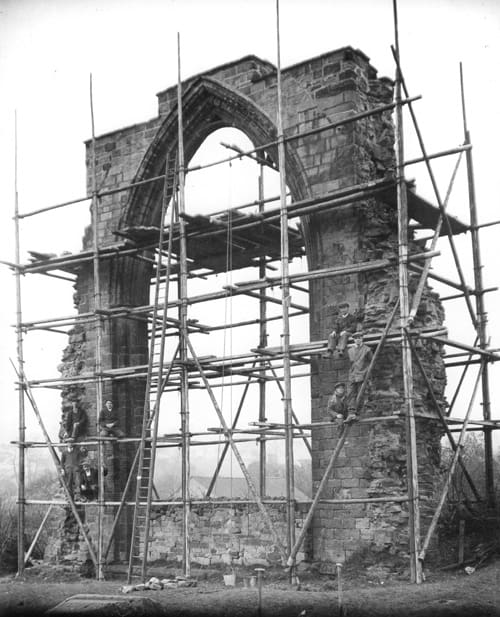
Although a relatively large establishment, the abbey at its height was home to no more than twenty-four canons: including the Abbot, dropping to as few as sixteen at times. This figure would have fallen even lower when one realises that at any one time, four of these canons would have been absent while serving as parish priests at Ilkeston, Heanor, Kirk Hallam and Stanton by Dale (see also Ilkeston’s Archaeology).
The Abbey became self supporting and self sufficient and with the gradual expansion of its holdings, eventually owned around 24,000 acres of land. Much of this would have been leased or rented out to local farmers or used for grazing or for the production of produce for the residents of the Abbey. The Abbey not only provided for the spiritual needs of the local populace but also served as a hospital for the sick and as a sanctuary for the weary traveller.
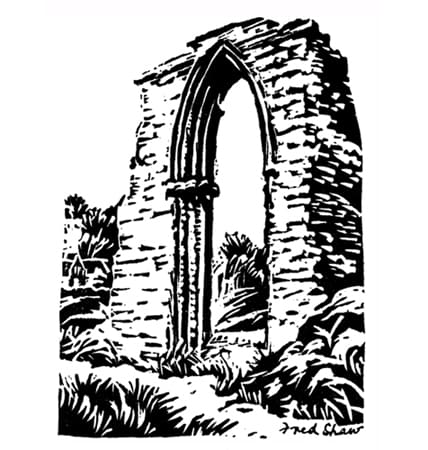
The Dissolution of Dale Abbey
On October 24th 1539, the Act of Dissolution was signed by King Henry the Eighth and so brought an end to almost four centuries of monastic life in the Dale.
Following the dissolution, Sir Francis Pole of Radbourne took possession of the Abbey, along with its furnishings and fittings. These were either gradually sold off or stripped out and installed in other churches. Morley Church became home to some of the stained and painted glass, floor tiles and an entire porchway. The ornately carved font cover was installed in Radbourne Church while Chaddesden received a window frame.
The Abbey’s font eventually found its way back to Dale Abbey All Saints Church in 1884 and the slabs upon which the canons walked for so many centuries, can be found in the grounds of the church at the Moravian Settlement at Ockbrook.
The Abbey Today
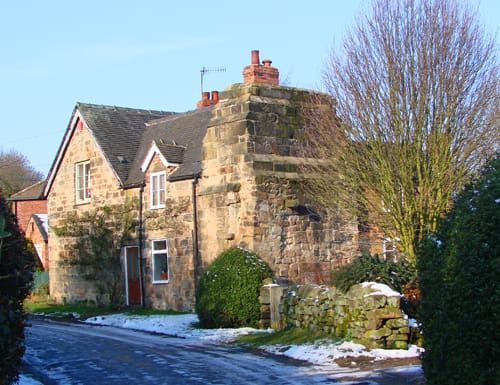
Although little remains of the Abbey, it is still possible to gauge the sheer size of the place from its ruins. The most obvious feature is, of course, the great east window. Other sections of the original Abbey can still be traced around the site as a number were eventually incorporated into other buildings or put to other uses.
Dale Abbey: All Saints Church – Grade 1
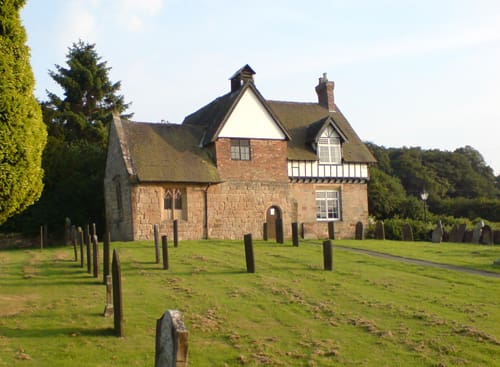
The present parish church is believed to have been the infirmary of the Abbey. It is one of the smallest and oldest of English churches, under the same roof as a dwelling house, formerly an inn. The interior contains 17th century box pews, a gallery, a pulpit of 1634 raised higher than the altar, which is fitted with doors and drawers for communion plates. Late 13th century wall paintings still survive. The masonry of the nave is Norman with late additions. The upper storey is perpendicular in style and has an open timber roof.
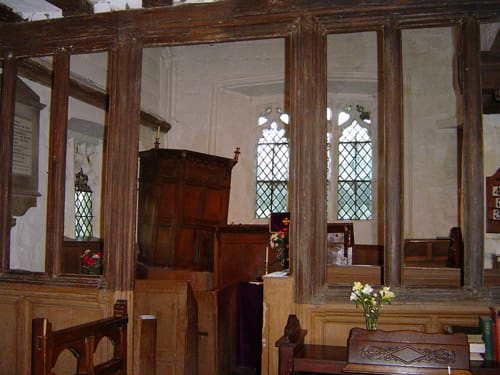
Dale Abbey: The Village
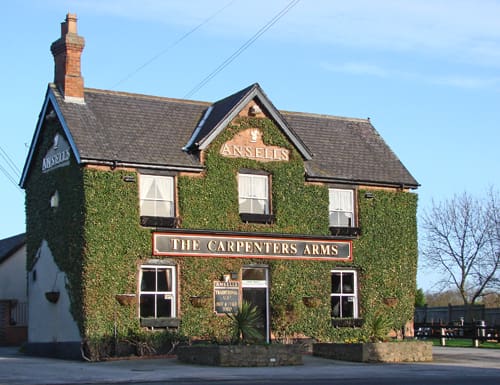
Apart from the Abbey ruins and church, other old buildings which are of interest are Abbey House and Manor House, a pair of Medieval cottages incorporating remains (possibly the kitchen) of the Abbey; Medieval outbuildings behind the Methodist church which were probably its gatehouse; Friar’s House (15th, 17th and 18th centuries) constructed of course square grit-stone, close studded timber framing and red brick; and a thatched, weather boarded barn on Tattles Hill.
Dale Abbey: Cat and Fiddle Windmill – Grade 1
A post mill, with a date of 1788 on woodwork but on an earlier mill site. The only surviving post mill in Derbyshire, a cafe/restaurant has been opened in the grounds and the exterior is viewable from the access road.
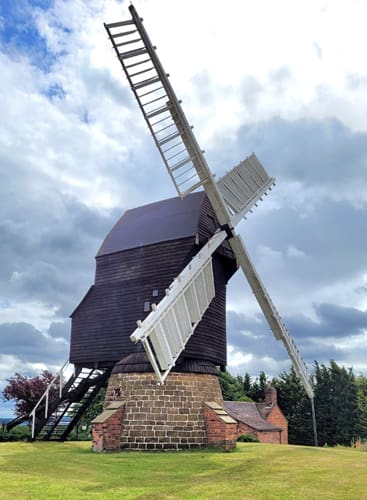
Dale Abbey: Sand Quarries and Wharf – SK 434389
The site of the abandoned sand quarries of the Stanton Ironworks Company, now mainly woodland. When in operation they were connected by a narrow gauge tramway feeding into the railway system connecting the Dale Collieries with the ironworks. Quarrying took place from around 1885 through to the 1940s.
Dale Abbey: Baldock Mill – SK 429404
The water mill race, pond and other round features can still be seen of this corn mill, traditionally believed to have originally been in the ownership of the canons of Dale Abbey.
Dale Abbey: The Flourish
This is the site of the former Stanhope Arms which was one of the earliest meeting places of the Freemasons in the district at a location known as Linrick in the medieval period. A local legend has it that a notorious outlaw known as Uthlagas, lying in wait for travellers, fell asleep and dreamed of the Abbey at Depedale, which so impressed him he became a reformed character and lived thereafter as a hermit. This may reflect the hazardous journeys of travellers along the track from Derby to Nottingham.
Dale Abbey: Locko Park – Grade 2
Locko Park passed from the Byrd family, in the late 16th century, to the Gilberts who rebuilt it starting with the chapel consecrated in 1673. In 1720 Robert Ferne purchased it and the present house dates mainly from 1725-30. Re-purchased by the Gilberts for ten years before sale in 1747 to John Lowe whose descendants still occupy it.
Dale Abbey: The Leper Colony
The preceptory of Locko, near Spondon, was a religious house of the Order of St Lazarus of Jerusalem which was founded to support lepers and members of all military orders. Contributions were sent to the mother house in Paris until the end of the war with France in 1360, when all property of the Lazarites was transferred to the Burton Lazars and Locko ceased to exist as a preceptory. However it continued as a hospital until dissolved by Henry the Eighth.

